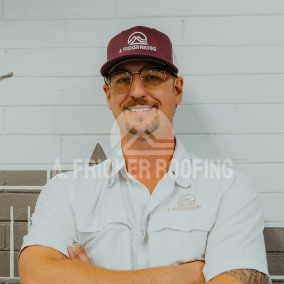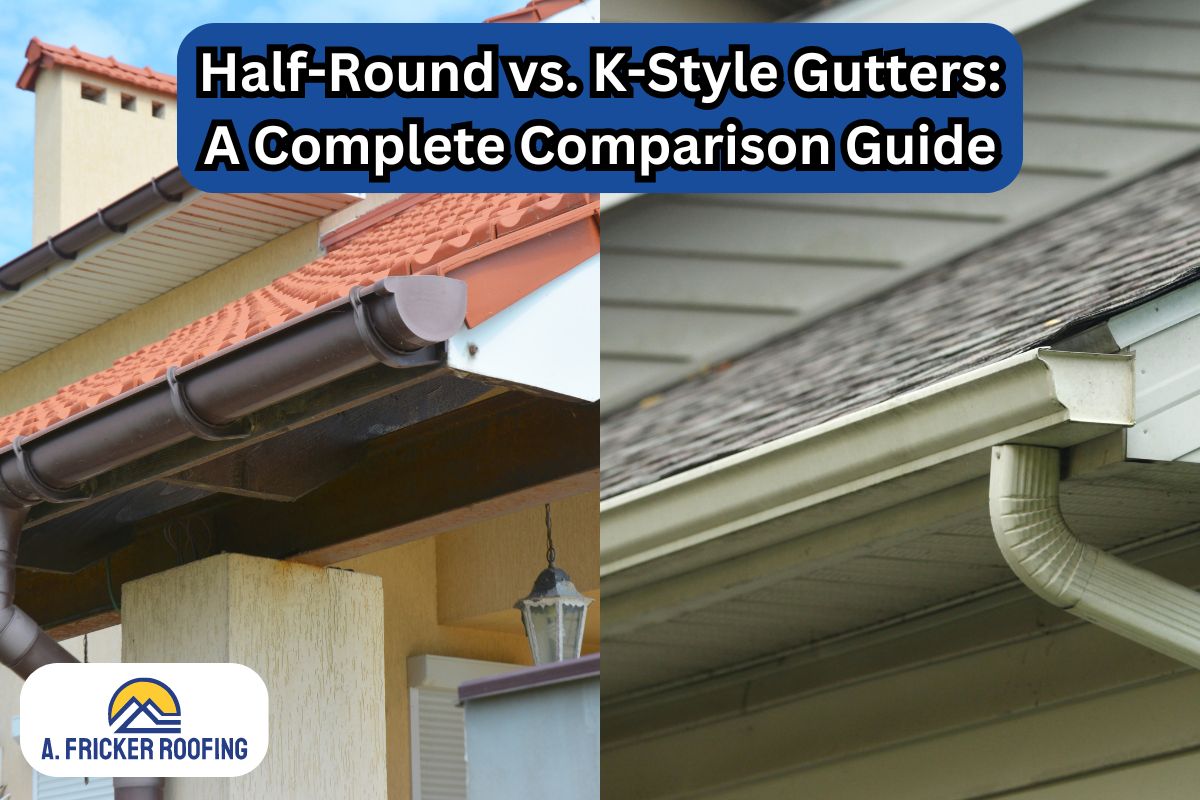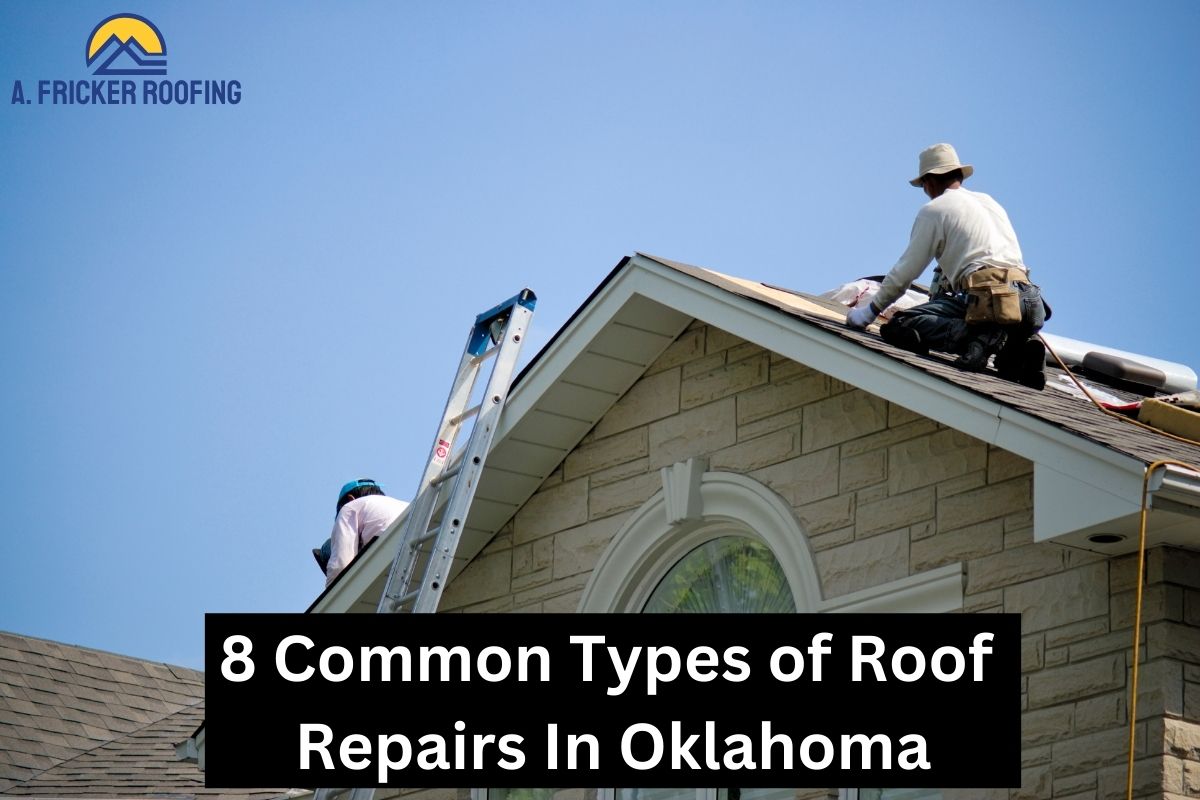
Despite being one of the most durable roofing systems on the market, metal roofs aren’t completely leak-resistant. Factors that can cause leaks in an asphalt shingle roof can also cause metal roofs to leak and require prompt repairs. Moreover, metal roof leaks mainly occur because of neglected maintenance. Every roofing system, whether made of metal or slate, needs timely maintenance to keep them in a top shape over time.
If your metal roof is leaking, this blog post can help. This guide will provide you with the necessary solutions to fix the cause of your metal roof leak. But first, you need to identify the reason for water leak in your metal roof.
Identify The Cause of Your Metal Roof Leaks
The following factors could be the cause of your metal roof leaks. While inspecting your roof, keep these signs in mind:
1. Age of the Metal Roof
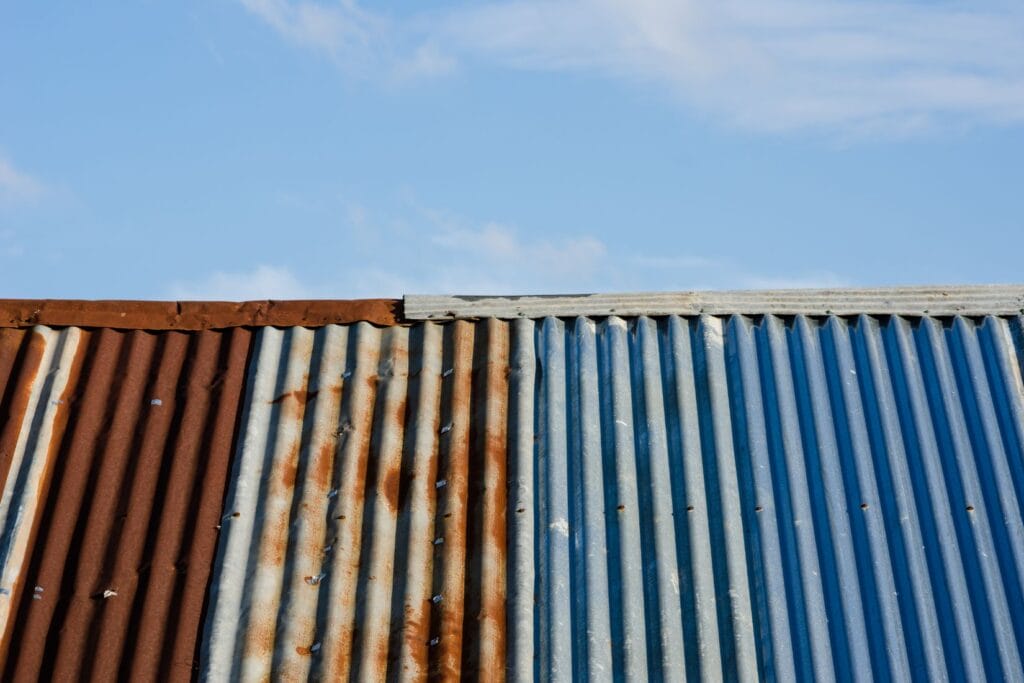
Metal roofs, though durable, are not immortal. Over time, exposure to the elements can cause materials to degrade. The aging process may lead to the development of rust, corrosion, and weakened seams, ultimately compromising the roof’s integrity. Due to this aging process, regular inspections are necessary.
2. Poor Installation and Workmanship
Poor installation can cause severe degradation of metal roofs. If not installed properly, the result is leaks and major damage. Metal roof leaks occur mainly because of misaligned panels, insecure fastenings, or inadequate sealing. These installation flaws create vulnerable points where water can penetrate, resulting in leaks. Therefore, hiring a qualified and experienced roofing professional for installation is a critical preventive measure.
3. Weathering and Impact Damage
Metal roofs, while resilient, can sustain damage from external factors such as falling branches, hailstorms, or other impact events. Even a minor dent or puncture can compromise the protective coating and expose the underlying material to water infiltration.
4. Deteriorated Sealant
Sealants play a crucial role in maintaining the watertight integrity of a metal roof. Over time, exposure to UV rays, temperature fluctuations, and general weathering can cause sealants to deteriorate. Cracked or dried-out sealant around seams, joints, and flashing is ineffective in preventing water penetration, leading to leaks. Therefore, while checking for leaks on your metal roof, also look around the sealants to see if they are in good condition.
5. Damaged Flashing
Like the sealants, flashing is installed to prevent water penetration. However, they are installed in more vulnerable areas, such as around chimneys, vents, and skylights. If flashing is improperly installed, damaged, or comes loose, it can compromise the roof’s ability to shed water effectively. Check for damaged flashing around roof penetrations during your roof inspection.
6. Ice Dams and Snow Accumulation
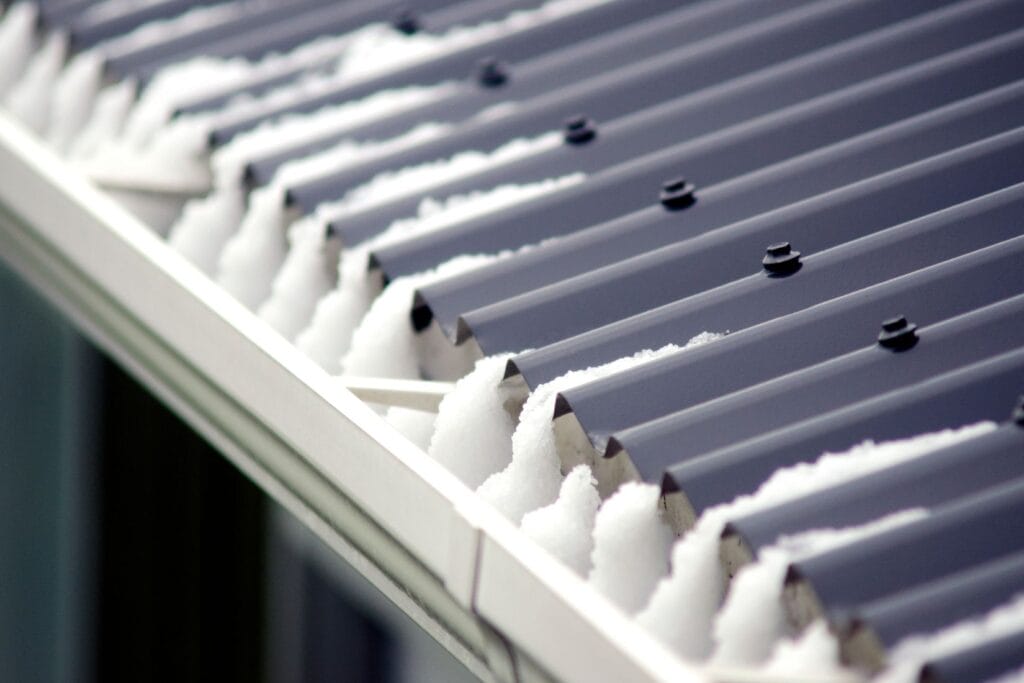
In regions where snowfall is common, the leaks can be caused by ice dams and snow accumulation. As snow melts and refreezes, it can seep into gaps and joints, causing water damage. Adequate insulation and ventilation can help mitigate the risk of ice dams, and regular snow removal can prevent an excessive snow load.
The Complete Metal Roof Leak Repair Process
Here is your simple and step-by-step guide to metal roof leak repair. Remember, it’s always recommended to call a professional to repair your roof rather than attempting to fix the issue yourself.
1. Remove Rust and Apply an Inhibitor
- Use a wire brush or sandpaper to remove rust from affected areas gently. Be cautious not to damage the metal surface during the process, as it can be risky.
- Once the rust is removed, apply a rust inhibitor to prevent further corrosion. Buy a compatible rust inhibitor that matches your metal roofing material and the style. Check for the manufacturer’s guidelines during the process.
2. Address Poor Installation Issues
- Inspect the roof for loose fastening or screws. Tighten any components that may have become dislodged, ensuring panels are securely attached to the roof structure. This task can be especially risky because you need to climb up to the roof, so don’t hesitate to call in a professional roofer if you aren’t comfortable with the work.
- Apply a generous amount of roofing sealant to seams and joints. This helps create a watertight seal, preventing water infiltration through vulnerable points.
- If panels are misaligned, carefully realign them to ensure a uniform and secure fit. Fasten any loose panels according to manufacturer specifications.
3. Fix Impact Damage to the Metal Panels
- Since dents and punctures may not be obviously seen, you will need to inspect your roof thoroughly. If you find any impact damage to your roof, document the extent of the issue to guide your roofer.
- If you find the damage is severe, consider replacing the panel. Follow manufacturer guidelines for panel replacement to maintain the structural integrity of the roof.
4. Repair Metal Roofing Flashing
- Since roof flashing is often installed under the roofing material, the roofing contractor will need to inspect the underlying layers of the roof. Check flashing around chimneys, vents, and skylights for signs of damage or deterioration and call in a roofing professional to replace any damaged sections.
- To reinforce the flashing, apply roofing cement around the edges. This creates an additional barrier against water infiltration.
5. Prevent Ice Dams and Snow Accumulation
- As said above, ice dams are a more severe issue in snowy regions. While you can wait for the snow and ice to melt naturally, it’s a good idea to take preventative measures to safeguard your roof in the meantime.
- One DIY method is using a roof rake to remove the snow from your roof. This stops the freeze-thaw cycle that leads to ice dam formation.
- Apart from this, if you are facing a leak problem on your metal roof, repair it as soon as possible. Contact professionals to apply the patching and sealant.
- For a permanent cure to ice dam formation, you can improve your attic insulation and ventilation. Proper insulation and ventilation in the attic minimize heat transfer to the roof, preventing the formation of ice dams.
Metal Roof Restoration: A More Reliable Solution
Metal roof restoration, as compared to metal roof leak repair, is a comprehensive process designed to revitalize, rejuvenate, and extend the life of existing metal roofing systems. This proactive approach involves cleaning, repairing, and applying specialized metal roof coatings to enhance the roof’s performance, durability, and aesthetic appeal. Whether you’re dealing with an aging roof, minor damage, or general wear and tear, metal roof restoration offers an economical alternative to full replacement.
One of the key advantages of metal roof restoration is its cost-effectiveness. Restoring a metal roof is generally more budget friendly than a full replacement, making it an attractive option for homeowners looking to extend their roof’s lifespan without breaking the bank.
When You Should Consider Metal Roof Replacement
If your metal roof has reached the end of its lifespan, you may need to consider a full roof replacement. Below are some signs that a replacement is the better option over repairs:
1. Persistent Leaks and Water Damage

Frequent and persistent leaks, despite repeated repair efforts, can be a sign that your metal roof has reached the end of its serviceable life. Water damage inside your home, visible stains on ceilings or walls, and damp insulation in the attic are clear indicators that the roof’s waterproofing capabilities have been compromised. In such cases, replacement is often the most effective solution.
2. Extensive Rust or Corrosion
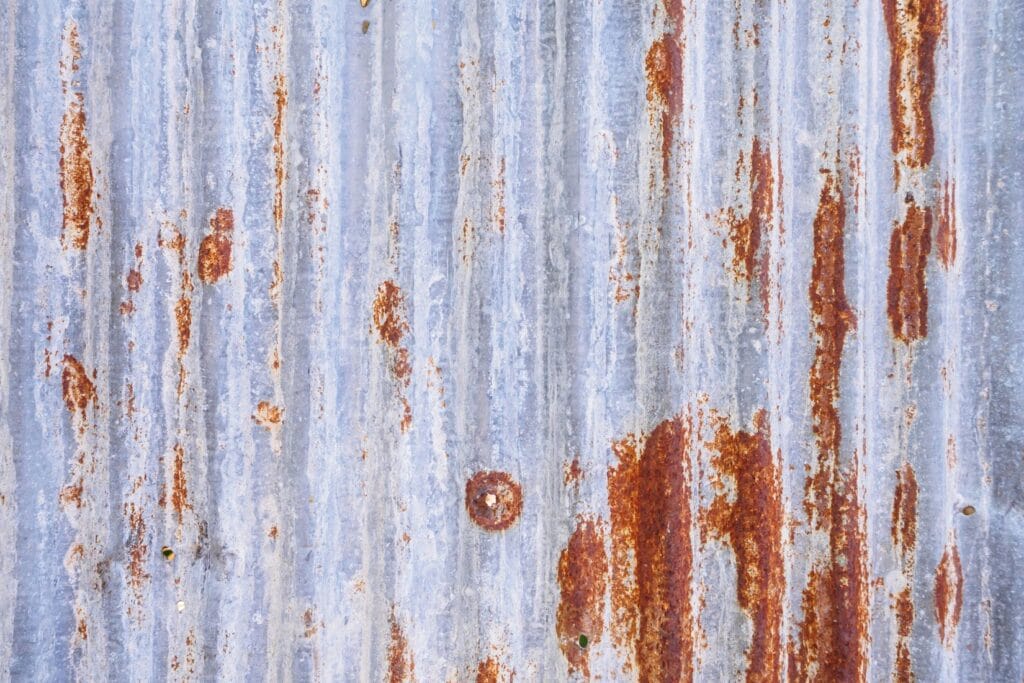
While small amounts of surface rust is normal over time, extensive rust or corrosion can weaken the metal and compromise its structural integrity. If a large portion of your metal roof is affected, especially in critical load bearing areas, replacement becomes necessary to ensure the safety and stability of the roofing system.
3. Severe Impact Damage
Metal roofs can withstand considerable impacts, but severe damage from events like hail storms or falling trees may necessitate complete replacement. If a significant portion of the roof has sustained major damage, it’s generally more cost-effective and practical to opt for a full replacement rather than repairs.
Final Thoughts
Understanding these common causes of metal roof leaks helps homeowners to take proactive measures to prevent and address issues. Also, to prevent metal roof problems, including roof leaks, regular inspections, proper maintenance, and timely repairs are necessary. This helps ensure the longevity and performance of your metal roofing system.
Contact A. Fricker Roofing and Waterproofing In Tulsa, OK, To Repair Your Metal Roof
We understand how frustrating metal roof leaks can be. Not only do they cause water damage, but they also increase the risk of structural instability. Therefore, we recommend Tulsa home and commercial building owners repair metal roof damage before it turns into a bigger problem.
The team at A. Fricker Roofing and Waterproofing to help mitigate the issues. The roofers at the company are proficient at handling any roofing job, whether its minor leaks or a complete replacement. Contact us today at (918) 402-7167 to consult a professional roofer.
